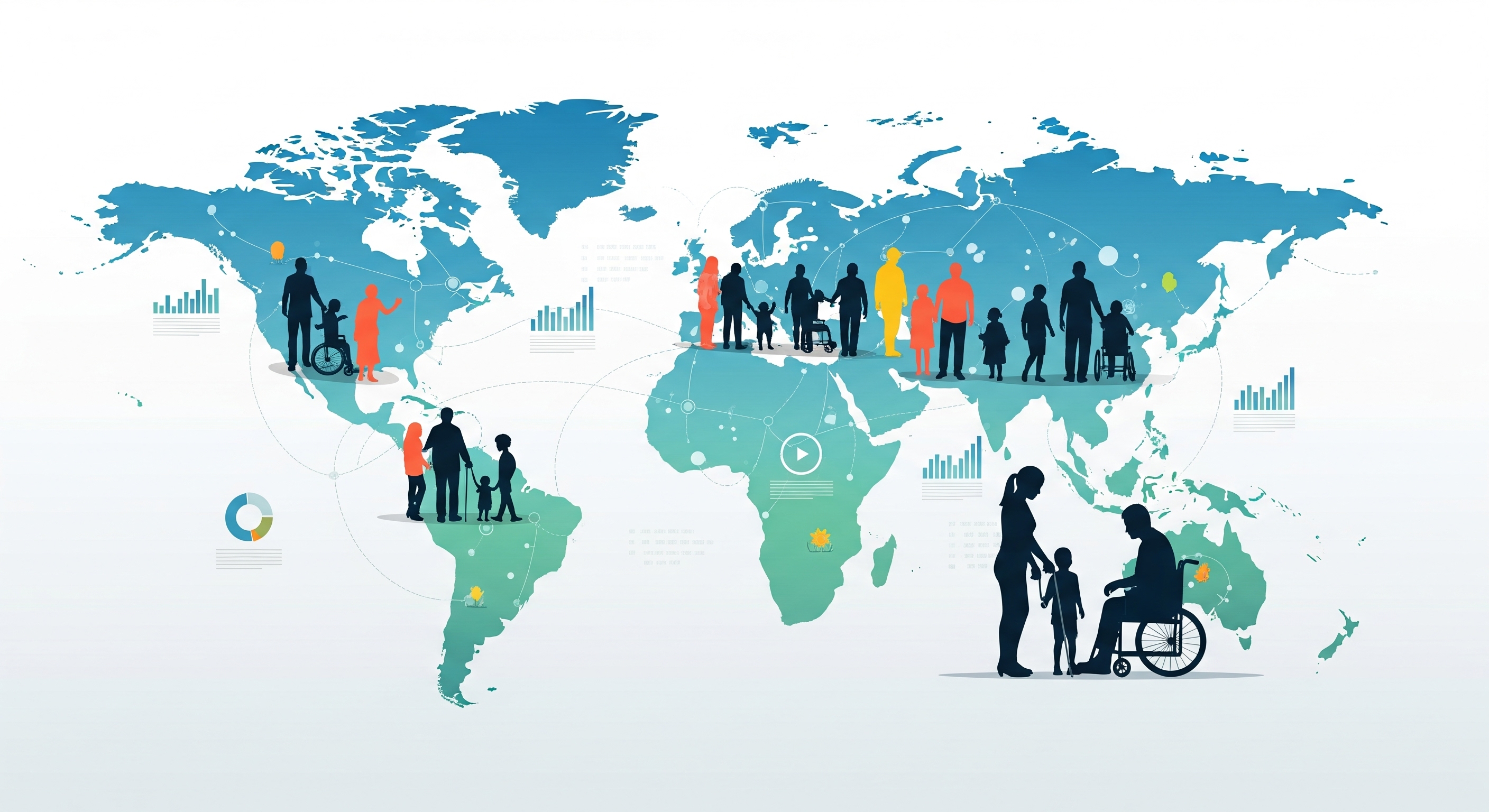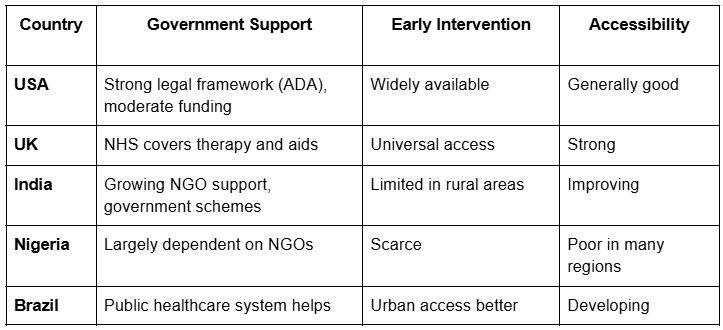Cerebral Palsy Around the World: Global Statistics & Insights

Living with Cerebral Palsy: A Global Snapshot of Lives, Hurdles, and Hopes
Cerebral palsy (CP) is a common physical disability in childhood, impacting how people move, hold themselves, and coordinate their muscles. It often arises from a brain injury or unusual development around birth, but the journey of living with cerebral palsy looks very different around the world. Things like getting healthcare and education, being included in society, and receiving support are all influenced by where you live, the economy, and government policies.
In this blog, we'll dive into the numbers behind cerebral palsy globally, look at the gaps in care, and shine a light on the ongoing work to build a more welcoming and supportive world for everyone living with this condition.
What is Cerebral Palsy?
Cerebral palsy is a condition that affects how people move and hold their bodies. It happens when there's damage to a baby's brain, usually before they're born. The signs can be very different for each person, but some common ones include:
- Muscles that are either too stiff or too floppy
- Trouble with coordination and keeping their balance
- Difficulty walking or using their arms and legs
- Challenges with speaking and swallowing
While the brain damage itself doesn't get worse over time, the physical difficulties can change and even become more challenging if people don't get the right therapy or care.
The Global Human Story of Cerebral Palsy
Understanding the human story of cerebral palsy worldwide helps us truly grasp its impact on individuals and families everywhere.
A Look at Lives Touched Globally
- Globally, we estimate that 1.5 to over 4 babies out of every 1,000 born will live with cerebral palsy.
- This means approximately 17 million people around the world are living with cerebral palsy. But the story doesn't stop there: over 350 million more individuals are deeply connected to someone with the condition—they are parents, siblings, or dedicated caregivers.
Impact Across Different Communities
- In high-income countries like the U.S., U.K., and Australia, we see about 2 to 2.5 babies out of every 1,000 born living with cerebral palsy.
- However, in low- and middle-income countries (LMICs), these numbers can be much higher, often reaching 3 to 4 or more out of every 1,000 births. This heartbreaking difference often comes down to challenges like limited access to prenatal and newborn care, malnutrition, infections, and complications during birth.
In Africa and parts of South Asia, studies reveal some of the highest numbers of people living with cerebral palsy, sometimes affecting 5 or more out of every 1,000 births.
Why the Disparity?
The difference in cerebral palsy statistics worldwide isn't just about our bodies—it shows bigger problems like:
- Getting good care for moms
- Having skilled people help during birth
- Care for newborns and programs that help early on
- Learning and knowing more about it
- Money matters and what governments decide
In many lower and middle-income countries, things we could prevent, like jaundice, not enough oxygen at birth, and infections that aren't treated, still cause cerebral palsy. We could largely avoid these if we had better healthcare.
Impact on Families and Caregivers
Caring for a loved one with cerebral palsy is a journey filled with unique challenges and profound rewards. Across the globe, families often grapple with immense emotional, physical, and financial pressures:
- In communities with limited resources, the absence of crucial rehabilitation services, therapy centers, or specialized schools often leaves children isolated within their homes.
- Even in more affluent nations, where support systems are more prevalent, the expense of lifelong care—encompassing therapies, specialized equipment, and home adaptations—can still be a heavy burden.
While support groups and advocacy networks are expanding, access to these vital connections remains limited for many families, particularly in rural and underserved areas.
A Global Community of Support
Despite the hurdles, so many dedicated people and groups across the world are pouring their hearts into making life better for individuals living with cerebral palsy.
Compassionate Nonprofits and NGOs
- Cerebral Palsy Alliance (Australia): They're there with therapy, essential equipment, and even funding vital research.
- United Cerebral Palsy (U.S.): A true lifeline, offering guidance, championing their rights, and building supportive communities.
- CBM International: Spreading hope in over 60 countries, they're on the ground providing rehabilitation and working to prevent disabilities in places that need it most.
United Nations and WHO's Guiding Hand
- The World Health Organization (WHO) actively champions a world where everyone, regardless of ability, is included and has access to vital rehabilitation.
The United Nations Convention on the Rights of Persons with Disabilities (CRPD) stands as a beacon, pushing for disability rights across the globe. While not every country has fully embraced it, it's a powerful step towards a more inclusive world.
How Countries Compare
Here's a quick look at how different nations address cerebral palsy care:

The Way Forward: Inclusion, Innovation, and Hope
To make things better and fairer for people with CP, we need to work together globally. Here's what we can focus on for the future:
- Getting Better Information
Many places don't have good numbers on how many people have cerebral palsy, which makes it hard to plan help. We need more studies, especially in areas that aren't well-represented.
- Education and Understanding
Teaching healthcare workers to spot and deal with CP early can really cut down on long-term problems. Also, when the public knows more, it helps reduce unfair judgments.
- Helpful Technology
Things like wheelchairs and communication tools can totally change lives. Making these tools affordable and available everywhere is super important.
- Rules and Support
Laws that protect people, school policies that include everyone, and money for healthcare can help people with CP live more on their own and have richer lives.
Final Thoughts
Cerebral palsy touches lives across the globe, yet the journey of living with it differs greatly based on where one is born. When we explore cerebral palsy statistics worldwide, we uncover more than just figures—we find powerful narratives of strength, inequality, and optimism.
Everywhere, people living with cerebral palsy deserve not only medical attention but also dignity, belonging, and a chance to thrive. Closing the global divides demands compassion, fresh ideas, and ongoing support.
Whether you're a parent, a healthcare professional, or simply a concerned individual, your understanding and engagement can help build a more welcoming future for everyone.





